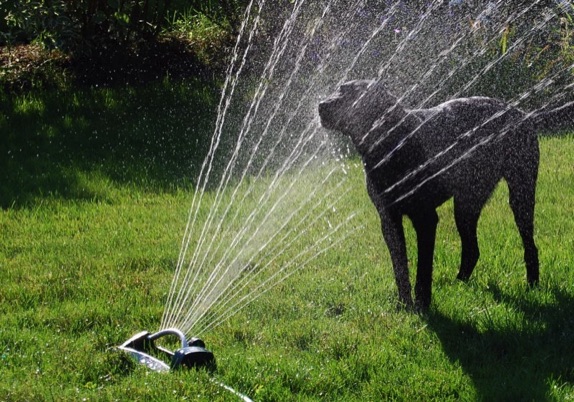Ben-Jee Kennels
HEALTH TIPS
We may know our canine companions better than anyone else, but it is important to remember most of us are not medical professionals. If you are uncertain how to treat your dog's medical needs or if you have any questions, you should contact your veterinarian immediately. It is important to keep the following information in mind with the arrival of summer:
• Have your dog's vaccinations updated if necessary. Diseases such as rabies, distemper and parvo are ever-present dangers and
necessary precautions should be taken.
• Beware of insect bites. If your dog is bitten or stung, remove the stinger and watch the site for an allergic reaction. If a reaction occurs or
there have been multiple wasp, bee or mosquito bites, take the animal to the vet.
• Talk with your veterinarian about flea and tick prevention medications.
• Heartworm is a common problem for dogs. Take your dog to a vet for a heartworm check every spring and follow your vet's advice
for heartworm precautions.
• Most lawn and garden products may be hazardous. Make sure that plants and fertilizers within the dog's reach are not toxic.
• The outdoors exposes dogs to the elements. Dogs may need extra brushing and bathing to stay clean and healthy.
• No matter how careful and responsible you may be, accidents can happen. Make sure your vet's phone number is close at hand
and available to all family members.
GENERAL SUMMER SAFETY CONCERNS
Hot weather can make anyone feel uncomfortable, and your dog is no exception. Here are some safety concerns for responsible dog owners:
• Never leave your dog unattended in direct sunlight or in a closed vehicle. Heatstroke can occur and lead to brain damage or death.
Signs of heatstroke are panting, drooling, rapid pulse and fever. Immediately immerse the dog in cool water and seek emergency
veterinary assistance.
• Never leave your dog unattended in a hot, parked car. When it's only 80 degrees outside, the inside of a car can heat up to more than
120 degrees in just minutes. Leaving the windows partially rolled down will not help. Your dog is susceptible to heat stroke and possible
death in these conditions.
• Always make sure your dog has access to fresh water.
• All dogs should have proper identification at all times. The AKC suggests a collar with an ID tag, along with a tattoo or a microchip.
• Keep your dog on a leash when he is outdoors to prevent accidents and injuries.
• Try to avoid strenuous exercise with your dog on extremely hot days and refrain from physical activity when the sun's heat is most intense.
BEACH TIPS
Taking your dog to the beach can be a great way to spend a beautiful summer day. However, as a responsible dog owner there are certain precautions you should take:
• Provide plenty of fresh water and shade for your dog.
• Dogs can get sunburn, especially short-haired dogs and ones with pink skin and white hair. Limit your dog's exposure when the sun
is unusually strong, and apply sunblock to his ears and nose 30 minutes before going outside.
• Check with a lifeguard for daily water conditions -- dogs are easy targets for jellyfish and sea lice.
• If your dog is out of shape, don't encourage him to run on the sand. Running on a beach is strenuous exercise, and a dog that is out
of shape can easily pull a tendon or ligament.
• Cool ocean water is tempting to your dog. Do not allow him to drink too much seawater. The salt in the water will make him sick.
• Salt and other minerals found in the ocean can damage your dog's coat. So, when you are ready to leave for the day, rinse him off
with fresh water.
• Not all beaches permit dogs. Check local ordinances before you begin your excursion to the beach.
DOES YOUR DOGGY PADDLE?
The majority of dogs can swim and they love it. But dogs entering the water for the first time should be tested. Here are some important tips for teaching your dog how to swim:
• Never throw your dog into the water.
• Start in shallow water, and call your dog's name. You can also try to coax him in with a treat or toy -- but always keep your dog
within reach.
• Another way to introduce your dog to the water is with a dog that already swims and is friendly with your dog. Let your dog follow
his friend.
• If your dog begins to doggy-paddle with his front legs only, lift his hind legs and help him float. He should quickly catch on and will
then keep his back end up.
• Swimming is a great form of exercise, but don't let your dog overdo it. He will be using new muscles and may tire quickly.
• Be careful of strong tides that are hazardous for even the best swimmers.
• Never leave your dog unattended! You should always be in a position to help him get out of the water.


Summer Safety Tips
excerpted from the AKC WEBSITE


NEW Hours:
Monday - Friday 8 am to 4:00 pm
Saturday 8 am to 3 pm
Sunday - Office closed except for pre-Paid Discharges by Appt.
Supervision: 24/7, 365 days a year
Fax: 215-257-3322
email: hallmark15@aol.com
47 Ridge Road, PO Box 1
Tylersport, PA 18971